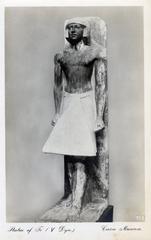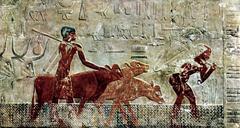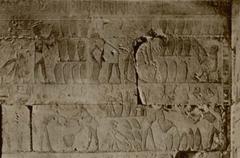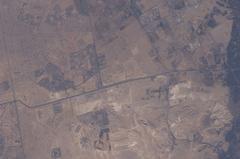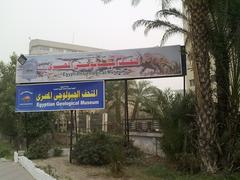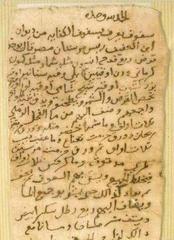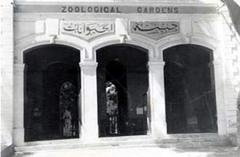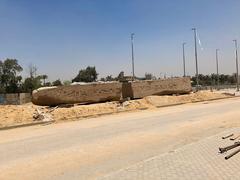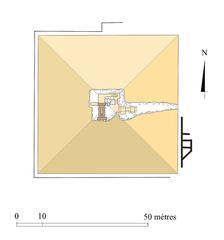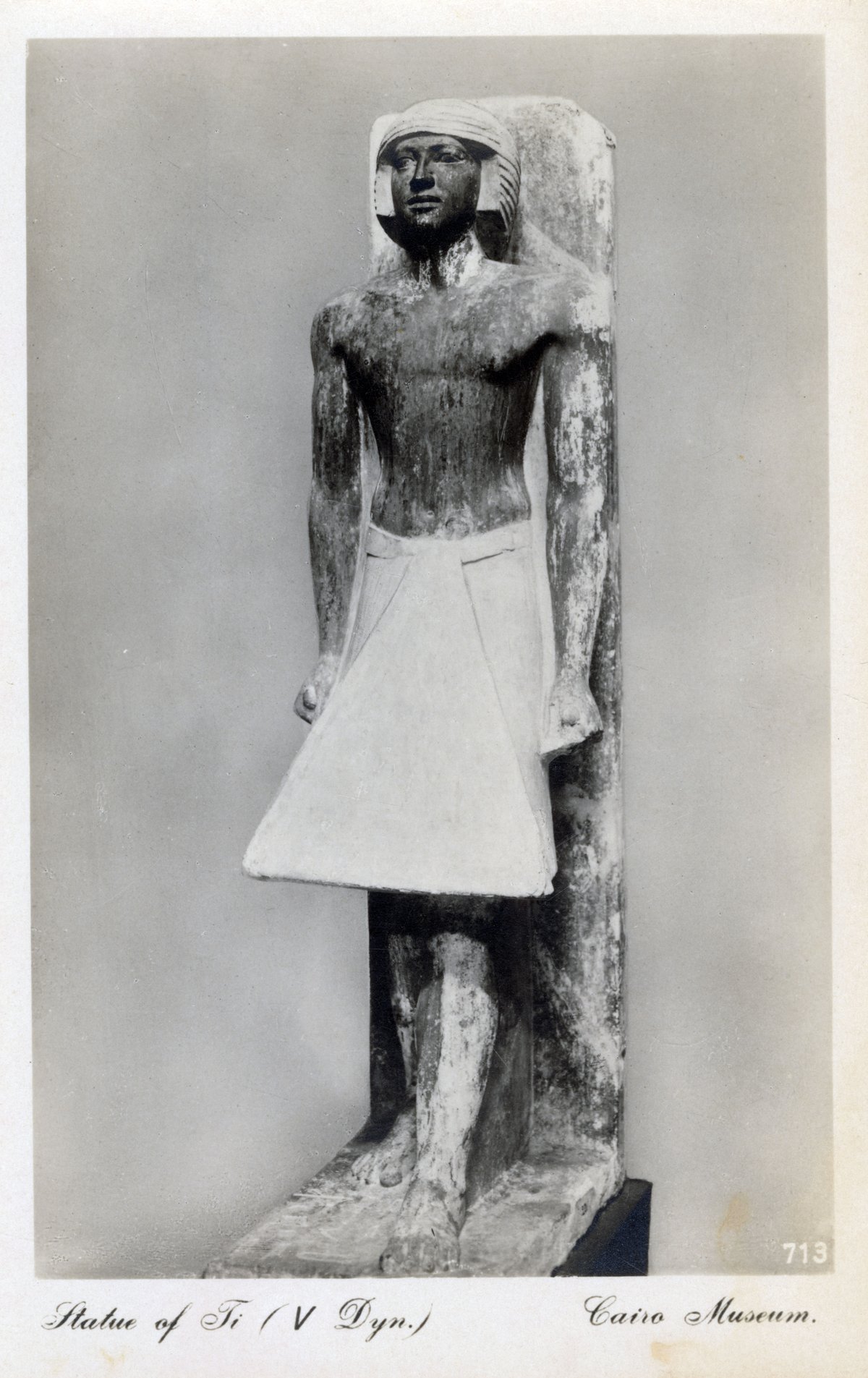
Mastaba of Ti: Visiting Hours, Tickets, and Historical Significance in Giza Governorate, Egypt
Date: 15/06/2025
Introduction
The Mastaba of Ti, an architectural and artistic marvel from Egypt’s Old Kingdom (Fifth Dynasty, c. 2450 BCE), stands within the Saqqara necropolis in the Giza Governorate. Serving as the tomb for Ti, a prominent official responsible for royal estates and pyramid construction under the pharaohs Neferirkare and Nyuserre, the mastaba exhibits the richness of ancient Egyptian art, religion, and social structure. Its exceptionally preserved limestone reliefs provide a vivid window into daily life, spiritual beliefs, and funerary customs of the era. The tomb’s proximity to other monumental sites, such as the Step Pyramid of Djoser, situates it within a broader context of the evolution of funerary architecture in Egypt.
This guide details the Mastaba of Ti’s historical importance, architectural features, and provides all essential visitor information—covering visiting hours, ticketing, accessibility, guided tours, and nearby attractions. For the most current details and updates, consult the Egyptian Ministry of Tourism and reputable travel resources (Remote Traveler, Travel Asker, Archaeology Magazine).
Table of Contents
- Introduction
- Origins and Construction
- Art and Cultural Significance
- Historical Context and Ti’s Role
- Architectural Innovations
- Archaeological Discoveries and Conservation
- Visiting Information
- Practical Visitor Tips
- Frequently Asked Questions (FAQs)
- Conclusion
- Sources and Further Reading
Origins and Construction of the Mastaba of Ti
Located in the vast Saqqara necropolis, the Mastaba of Ti is among the largest and best-preserved non-royal tombs of the Fifth Dynasty. Measuring approximately 42 meters by 22 meters, and about 6 meters in height, its construction utilized fine Tura limestone and mud bricks. The classic bench-like appearance (“mastaba” means “bench” in Arabic) is coupled with a north–south axis, reflecting religious beliefs about the afterlife journey.
Key Structural Features
- Entrance Corridor: Adorned with reliefs introducing the tomb’s artistic themes.
- Offering Chapel: A columned hall for rituals, with elaborate wall carvings.
- Serdab: A concealed chamber with a statue of Ti that allowed his spirit (ka) to observe and receive offerings.
- Burial Shaft: The tomb’s subterranean chamber housed Ti’s sarcophagus and grave goods, ensuring protection and sustenance in the afterlife.
Artistic and Cultural Significance
The Mastaba of Ti is celebrated for its extensive, high-quality reliefs. These carvings depict:
- Agriculture and Crafts: Scenes of farming, animal husbandry, woodwork, and metalworking, illustrating the economic activities of Ti’s estate (Heritage Daily).
- Funerary Rites: Lifelike depictions of offerings, processions, and rituals to secure Ti’s well-being in the afterlife.
- Boating and Fishing: Dynamic riverine scenes emphasizing the Nile’s centrality to Egyptian life.
These reliefs not only served a decorative purpose but fulfilled religious functions, ensuring the ongoing nourishment of Ti’s spirit. Hieroglyphic texts detail his titles, achievements, and offering formulas, providing a comprehensive record of his status (La Brújula Verde).
Historical Context and the Role of Ti
Constructed during a period of prosperity, the Mastaba of Ti reflects the era’s social hierarchy and religious practices. Saqqara, as the primary necropolis of Memphis (the ancient capital), houses tombs of rulers, priests, and officials.
Ti’s inscriptions reveal his titles: “Overseer of the Pyramids of Neferirkare and Nyuserre,” “Overseer of the Sun Temples,” and “Priest of Ra.” These roles placed him at the heart of state religious and economic administration (Egypt Independent). Unlike royal pyramids, elite mastabas like Ti’s emphasized personal achievements and family lineage through art and architecture.
Architectural Innovations
The Mastaba of Ti introduced several designs that influenced later tombs:
- False Doors: Elaborately carved portals for the deceased’s spirit to interact with offerings (Archaeology Magazine).
- Painted Limestone Reliefs: Carved and painted scenes for durability and visual impact.
- Ceiling Decoration: Painted ceilings imitating granite blocks, showcasing attention to atmospheric detail (Heritage Daily).
Archaeological Discoveries and Conservation
First excavated in the 19th century by Auguste Mariette, the Mastaba of Ti has benefited from continuous research and conservation. Despite ancient looting, the tomb retains remarkable preservation. Recent discoveries throughout Saqqara, including adjacent tombs of high officials, continue to shed light on Old Kingdom society (La Brújula Verde, Archaeology Magazine).
Visiting Information
Hours and Tickets
- Opening Hours: 8:00 AM – 5:00 PM daily (subject to seasonal variations and holidays; always confirm in advance via Egyptian Ministry of Tourism).
- Tickets: Included with general Saqqara site admission. As of 2025, tickets are approximately 200 EGP for foreign visitors, with student discounts available (Nile Empire). Tickets can be purchased on-site or online.
Accessibility
- The site involves sandy, uneven ground and steps. Some areas are not wheelchair accessible. Visitors with mobility concerns should plan accordingly.
Guided Tours and Audio Guides
- Guided tours are strongly recommended to interpret the tomb’s symbolism and history. Guides are available at the entrance or can be booked through tour operators (Travel Asker). Audio guides and mobile apps offer self-paced exploration.
Nearby Attractions
- Step Pyramid of Djoser: The oldest stone pyramid in Egypt.
- Serapeum: Tombs of the sacred Apis bulls.
- Pyramid of Unas: Known for the oldest pyramid texts.
- Other Mastabas: Including Mereruka, Kagemni, and Ptahhotep (Egyptopia).
Photography and Best Times to Visit
- Photography is allowed (no flash), but check for updated rules. Early morning or late afternoon provides ideal lighting and fewer crowds.
Practical Visitor Tips
- Dress comfortably: Wear sturdy shoes and sun protection.
- Hydration: Bring water; on-site vendors are limited.
- Cash: Carry small denominations for tickets and tips.
- Restrooms: Available near the main entrance, but limited inside the necropolis.
- Respect preservation rules: Don’t touch reliefs or cross barriers.
Frequently Asked Questions (FAQs)
Q: What are the Mastaba of Ti visiting hours?
A: 8:00 AM to 5:00 PM daily, but confirm before your visit.
Q: How much are tickets?
A: About 200 EGP for foreigners, with discounts for students.
Q: Is the Mastaba of Ti accessible for visitors with disabilities?
A: Accessibility is limited due to terrain and stairs.
Q: Are guided tours available?
A: Yes, highly recommended for in-depth understanding.
Q: Can I take photographs inside?
A: Yes, but flash and tripods usually require special permission.
Conclusion
The Mastaba of Ti is a highlight of Saqqara and a must-see for anyone interested in Egypt’s ancient history. Its masterpieces of relief art, innovative architecture, and rich symbolism provide a unique perspective on the lives and beliefs of the Old Kingdom elite. By planning ahead—checking visiting hours, securing tickets, and considering a guided tour—visitors can fully appreciate this extraordinary site. To extend your exploration, visit nearby monuments such as the Step Pyramid and the Serapeum, and consult official resources and travel apps for the latest updates.
For deeper engagement, explore virtual tours, high-quality images, and related articles on Saqqara’s treasures. Download the Audiala app for real-time updates, and follow us on social media for more travel inspiration and archaeological news.
Visuals and Interactive Resources
Further Reading and Sources
- Archaeology Magazine
- Travel Asker
- Sailing Stone Travel
- Remote Traveler
- Heritage Daily
- La Brújula Verde
- Egypt Independent
- Nile Empire
- Lonely Planet
- Mapcarta
- Egyptopia
